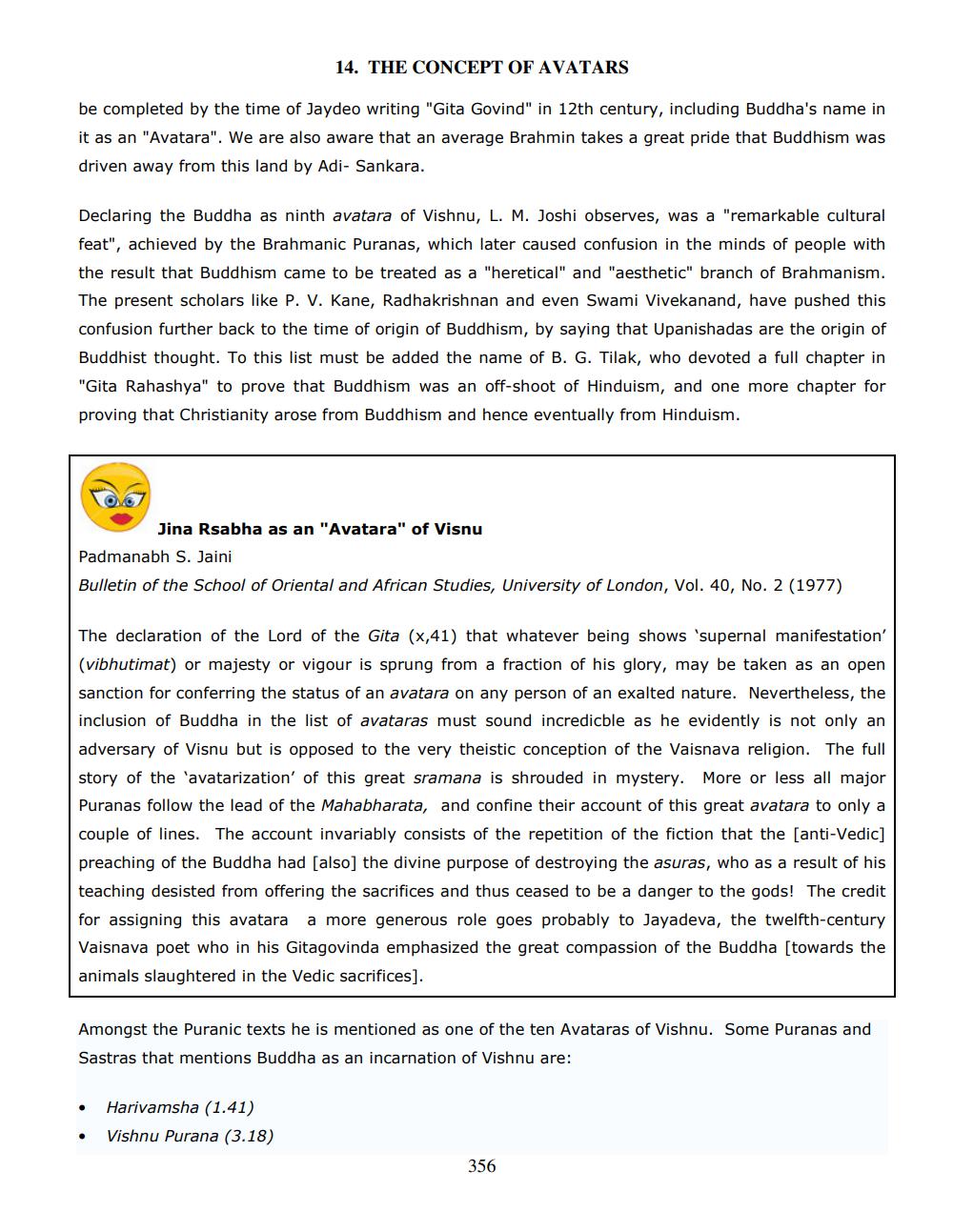________________
14. THE CONCEPT OF AVATARS
be completed by the time of Jaydeo writing "Gita Govind" in 12th century, including Buddha's name in it as an "Avatara". We are also aware that an average Brahmin takes a great pride that Buddhism was driven away from this land by Adi- Sankara.
Declaring the Buddha as ninth avatara of Vishnu, L. M. Joshi observes, was a "remarkable cultural feat", achieved by the Brahmanic Puranas, which later caused confusion in the minds of people with the result that Buddhism came to be treated as a "heretical" and "aesthetic" branch of Brahmanism. The present scholars like P. V. Kane, Radhakrishnan and even Swami Vivekanand, have pushed this confusion further back to the time of origin of Buddhism, by saying that Upanishadas are the origin of Buddhist thought. To this list must be added the name of B. G. Tilak, who devoted a full chapter in "Gita Rahashya" to prove that Buddhism was an off-shoot of Hinduism, and one more chapter for proving that Christianity arose from Buddhism and hence eventually from Hinduism.
Jina Rsabha as an "Avatara" of Visnu Padmanabh S. Jaini Bulletin of the School of Oriental and African Studies, University of London, Vol. 40, No. 2 (1977)
The declaration of the Lord of the Gita (x,41) that whatever being shows 'supernal manifestation' (vibhutimat) or majesty or vigour is sprung from a fraction of his glory, may be taken as an open sanction for conferring the status of an avatara on any person of an exalted nature. Nevertheless, the inclusion of Buddha in the list of avataras must sound incredicble as he evidently is not only an adversary of Visnu but is opposed to the very theistic conception of the Vaisnava religion. The full story of the 'avatarization' of this great sramana is shrouded in mystery. More or less all major Puranas follow the lead of the Mahabharata, and confine their account of this great avatara to only a couple of lines. The account invariably consists of the repetition of the fiction that the [anti-Vedic] preaching of the Buddha had [also] the divine purpose of destroying the asuras, who as a result of his teaching desisted from offering the sacrifices and thus ceased to be a danger to the gods! The credit for assigning this avatara a more generous role goes probably to Jayadeva, the twelfth-century Vaisnava poet who in his Gitagovinda emphasized the great compassion of the Buddha (towards the animals slaughtered in the Vedic sacrifices].
Amongst the Puranic texts he is mentioned as one of the ten Avataras of Vishnu. Some Puranas and Sastras that mentions Buddha as an incarnation of Vishnu are:
• Harivamsha (1.41)
Vishnu Purana (3.18)
356




